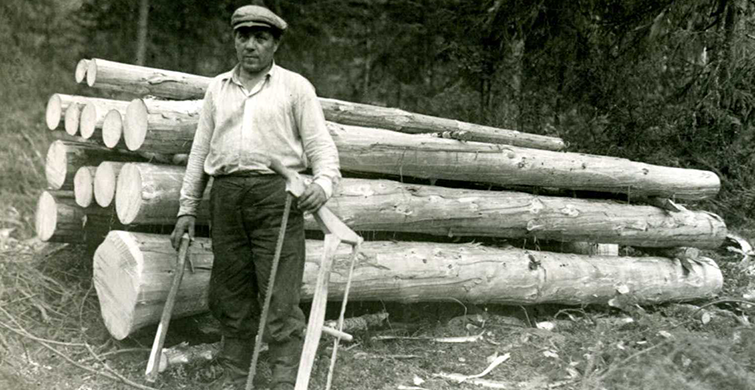Support Activities for Lumberjacks

There is one class of men in this country that never is mentioned in song.
And now, since their trade is advancing, they’ll come out on top before long.
They say that our sailors have danger, and likewise our warriors bold,
But there’s none know the life of a driver, what he suffers with hardship and cold.
So begins the Newfoundland folk ballad, The Badger Drive, which describes the work of the lumber drive near the town of Badger, in Newfoundland. If you haven’t had your daily dose of Newfoundland folk music, here is the song in its entirety:
So what is a lumber drive? It’s the process of floating freshly cut timber down a river to sawmills and pulp mills. Drivers float down the river on the logs, making sure they don’t get stuck on riverbanks or get into a logjam.

As the song describes, it’s hard work. So outside of Newfoundland, where are the log drivers? Loyal blog readers know that PolicyMap is THE go-to resource for geographic lumberjack data. Using Census’s County Business Patterns or BLS’s Quarterly Census of Employment and Wages, you can find out how many people in an area work in a specific industry.
So are log drivers part of the “Forestry and Logging” industry, or the “Support Activities for Agriculture and Forestry” industry? Good question! It depends on whom the drivers work for. The data categorize employees by the establishment they work for. If the log driving operation is part of the logging operation (the same company chops the wood and floats the wood), then they’d be in the “Forestry and Logging” category. If the log driving is its own entity, then it would be considered a support activity. So you might take a look at both if you want to find drivers.
Oh, by the way, log driving on rivers became obsolete with the advent of railroads and trucking on logging roads, so they don’t actually exist anymore. But certainly there are plenty of peripheral occupations in the forestry industry that deserve our respect and attention, and for them, we celebrate in song and data.
Take a look at all the industries we have data for in the County Business Patterns data, in the Economy tab. The data, which goes down to the ZIP code level, has just been updated to 2012, so you’re seeing the LATEST lumberjack data available.